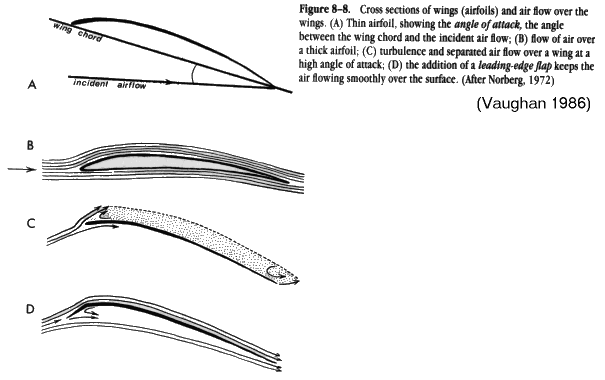
Aerodynamics of Bat Wings: Thin Airfoils

Aerodynamics of Bat Wings: Thin Airfoils
(A) A curved surface presented to an airstream (arrow) acts as an airfoil because of the difference in airflow above and below the object. Airflow moving over the longer curve of the upper surface must move more rapidly to arrive at the trailing edge at the same time as airflow moving on the shorter straight path below the wing. Since rapidly moving air exerts less lateral pressure, airflow above the wing exerts less downward pressure than the slowly moving air below the wing exerts in the upward direction, and the differential gives a resultant vector, called lift, directed upwards.
(B) Airplane and bird wings are typically thick airfoils held parallel to the airstream, so as to maximize speed. Greater lift is achieve by curving the wings with trailing edge flaps (ailerons). (C) Bat wings are typically thin, cambered plates, held at an angle to the airflow. The natural tendency of such a wing as the angle of attack increases is to create turbulence on the upper surface, which disrupts laminar flow and results in a stall (this is how birds land). (D) The solution in bats is a leading-edge flap (the propatagium) that achieves a similar degree of curvature while maintaining laminar flow.